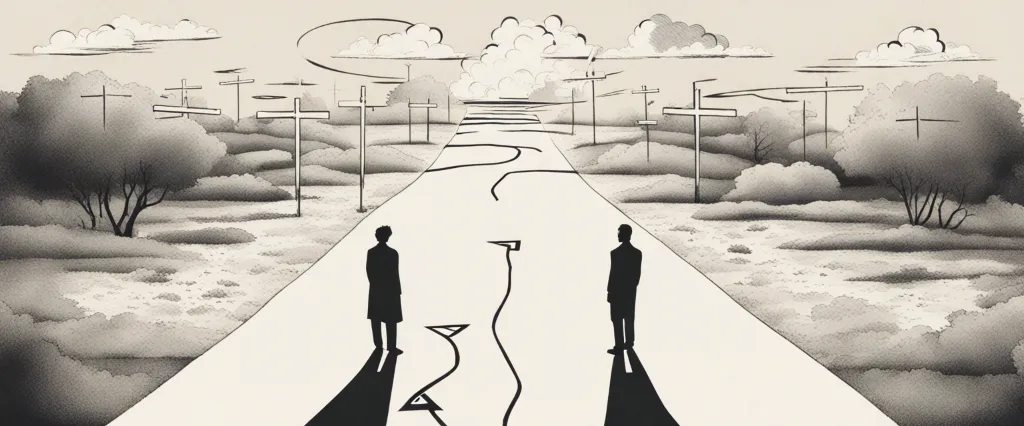In Blindspot, Mahzarin R. Banaji, a renowned social psychologist, unveils the hidden biases that guide our thoughts and actions, often without our conscious awareness. Drawing on extensive research, Banaji explores the roots and consequences of stereotypes, prejudices, and discrimination, providing valuable insights into the nature of human bias. She challenges us to confront and overcome these ingrained biases to create a more inclusive and equitable society. With her expertise in the field of implicit social cognition, Banaji shines a light on the blind spots that hinder our understanding of ourselves and others, offering an opportunity for personal growth and societal transformation.
Mahzarin R. Banaji is the Richard Clarke Cabot Professor of Social Ethics at Harvard University, where she co-founded the university’s Implicit Association Test (IAT). Her pioneering work on unconscious bias has earned her numerous accolades and recognition within the field of social psychology. Banaji’s research has significantly impacted our understanding of how our unconscious mind influences our behavior, challenging conventional notions of fairness and equality. Through her groundbreaking research and passionate advocacy for social justice, Banaji seeks to empower individuals and institutions to overcome their blind spots and build a more just society.
Chapter 1: Unconscious Bias: Exploring the Hidden Influences on Our Perceptions and Behaviors
Chapter 1 of “Blindspot” by Mahzarin R. Banaji, titled “Unconscious Bias: Exploring the Hidden Influences on Our Perceptions and Behaviors,” delves into the concept of unconscious bias and how it impacts our everyday lives. Banaji begins by defining unconscious bias as the automatic associations that the mind forms without our conscious awareness, leading to a tendency to categorize and favor certain groups of people over others. She argues that everyone possesses unconscious biases, regardless of their intentions or personal beliefs.
Banaji explains that these biases are deeply ingrained in our minds due to societal influences, upbringing, and cultural conditioning. Our biases are formed through exposure to stereotypes, media portrayals, and social norms, which shape our perceptions and subsequently affect our behaviors. Banaji provides thought-provoking examples and studies that illustrate how unconscious bias is prevalent in various domains, from healthcare to employment.
The chapter highlights the Implicit Association Test (IAT), which measures individuals’ unconscious biases by analyzing their automatic mental associations. Banaji discusses the IAT’s usefulness in uncovering biases that people may not consciously harbor or even recognize within themselves. She emphasizes that the test is not intended to label individuals as good or bad, but to aid in developing self-awareness and promoting social change.
Overall, Chapter 1 of “Blindspot” introduces readers to the idea of unconscious bias and its pervasive nature in shaping our perceptions and actions. Banaji aims to ignite a conversation about the importance of understanding and confronting our biases, with the ultimate goal of fostering a more equitable and inclusive society.
Chapter 2: The Mind’s Hidden Filters: Understanding the Cognitive Mechanisms Behind Bias
Chapter 2 of “Blindspot” dives into the concept of the mind’s hidden filters and provides an understanding of the cognitive mechanisms that contribute to bias. The authors, Mahzarin R. Banaji and Anthony G. Greenwald, explore how our brains automatically and unconsciously process information, leading to biased thinking and decision-making.
The chapter begins by explaining that our minds constantly receive an overwhelming amount of information, and to cope with this, they rely on shortcuts or mental filters to process it efficiently. These filters are shaped by our experiences, culture, and social surroundings, and they help us make sense of the world quickly. However, they also introduce biases and stereotypes.
One of the main cognitive mechanisms explored is known as ‘selective attention.’ Our brains naturally focus on certain aspects of a situation while filtering out others. This biased attention is influenced by our pre-existing beliefs and stereotypes, leading us to notice and remember information that supports our biases. This phenomenon is called ‘confirmation bias.’
Additionally, the chapter discusses the concept of ‘priming.’ Our mental filters are primed or activated by environmental cues, affecting our subsequent judgments and behaviors. The authors illustrate this through various experiments and studies that demonstrate how exposure to certain words or images can influence our thoughts and decisions, often without our conscious awareness.
Furthermore, the chapter highlights ‘implicit association’ – the subconscious associations we form between different concepts, such as race, gender, or age. These associations affect our automatic reactions and judgments, often contradicting our consciously held beliefs.
Overall, Chapter 2 explains how the mind’s hidden filters operate as cognitive mechanisms behind bias. By understanding these mechanisms, we can become more aware of our own biases and make an effort to challenge and overcome them.
Chapter 3: Implicit Associations: Examining the Subconscious Associations We Hold
Chapter 3 of “Blindspot” by Mahzarin R. Banaji focuses on implicit associations and how these subconscious associations impact our thoughts and actions. The chapter begins by explaining that our mental processes occur at both conscious and unconscious levels, with the latter controlling the majority of our thoughts and behavior.
Implicit associations, also known as implicit biases, refer to the unconscious associations that we hold about certain social groups or categories. These associations can be related to race, gender, age, or other factors. Banaji discusses various studies and experiments that have provided evidence of implicit associations. One example is the Implicit Association Test (IAT), a widely-used measure that reveals individuals’ unconscious biases.
The chapter further explores the origins of implicit associations, suggesting that they develop from early childhood experiences and exposure to societal stereotypes. Banaji emphasizes that implicit biases are not the result of individual’s personal intentions or overt beliefs but are rather deeply ingrained societal biases.
Banaji argues that implicit biases can influence our perceptions, judgments, and behavior, even when we consciously reject stereotypes. She highlights the importance of recognizing and challenging these biases in ourselves and in society. The chapter concludes by discussing the potential consequences of implicit associations, such as perpetuating discrimination and inequality.
Overall, Chapter 3 of “Blindspot” provides a comprehensive overview of implicit associations and their influence on our subconscious thoughts and actions. Banaji encourages readers to acknowledge and confront these biases in order to create a more inclusive and equitable society.
Chapter 4: Stereotypes and Prejudice: Uncovering the Impact of Cultural Conditioning

Chapter 4 of “Blindspot” by Mahzarin R. Banaji delves into the concept of stereotypes and prejudice and explores how cultural conditioning plays a profound role in shaping our biases. The chapter illuminates the power of societal narratives in influencing our thoughts and actions, often without our conscious awareness.
Banaji starts by emphasizing that stereotypes are not necessarily negative; they are simply mental shortcuts that our brains use to make sense of the world. However, when stereotypes become ingrained and unconscious, they can perpetuate prejudice and discrimination. Banaji meticulously dissects the influence of cultural conditioning on the development of biases, highlighting the role of early upbringing, media, and societal norms in shaping our implicit attitudes.
The chapter presents numerous psychological experiments and studies to back the idea that individuals from different cultural backgrounds can exhibit implicit biases and favor certain groups or ideas. Banaji introduces the Implicit Association Test (IAT), a tool developed by herself and her colleagues to measure implicit biases, and outlines its significance in uncovering our hidden preferences.
Banaji also discusses the impact of cultural conditioning on women’s empowerment, racial biases, and stereotypes related to various social groups. She provides compelling examples of how even individuals who genuinely endorse equality can still demonstrate implicit biases due to cultural conditioning.
Overall, Chapter 4 highlights the crucial role of cultural conditioning in shaping stereotypes and prejudice. The chapter emphasizes the need to be aware of our implicit biases and promotes the idea that by recognizing them, we can actively challenge and overcome them, ultimately working towards a more inclusive and egalitarian society.
Chapter 5: The Power of Perspective: Recognizing the Role of Context in Shaping Bias
Chapter 5 of the book “Blindspot” by Mahzarin R. Banaji focuses on the power of perspective and how it influences our biases, particularly through the role of context. The chapter emphasizes that biases are not inherent or fixed traits, but rather are shaped by the environment and circumstances in which we exist.
Banaji starts by highlighting the impact of context on our judgements and decisions. She explains that biases are often influenced by the environment in which they occur, and the same person may hold different biases depending on the context. Even individuals who believe themselves to be objective and unbiased may unknowingly display biased behavior due to the influence of situational factors.
The chapter also delves into stereotype activation, which occurs when stimuli in the environment trigger automatic associations in our minds. Banaji explains that context can activate different stereotypes and influence our perceptions and behaviors accordingly. These biases can affect various aspects of our lives, including education, employment, and criminal justice.
Banaji further explores the concept of implicit biases, which are unconscious attitudes and beliefs that we form based on societal factors. These biases can be deeply ingrained and difficult to recognize, but context plays a significant role in determining their expression.
The chapter concludes by emphasizing the importance of understanding how context shapes biases. By recognizing that our perspectives are influenced by the environment and context in which we operate, we can become more aware of our biases and work towards reducing their impact. Banaji encourages readers to question their assumptions, seek diverse perspectives, and actively challenge societal and contextual influences that perpetuate biased thinking.
Overall, Chapter 5 of “Blindspot” highlights the role of context in shaping bias and urges individuals to be mindful of the situational factors that contribute to our judgments and actions.
Chapter 6: Overcoming Blindspots: Strategies for Challenging and Reducing Unconscious Bias
Chapter 6 of Mahzarin R. Banaji’s book “Blindspot: Hidden Biases of Good People” focuses on strategies to challenge and reduce unconscious bias, also known as blindspots. The chapter begins by acknowledging that unconscious bias is a natural and inevitable consequence of the human mind’s processing shortcuts, learned associations, and cultural conditioning.
The chapter discusses ways to overcome blindspots by first recognizing and accepting the existence of unconscious bias. Banaji stresses the importance of acknowledging that everyone has biases and that these biases can affect our thoughts, actions, and decision-making processes. By accepting this, individuals can work towards minimizing the impact of their biases on their judgments.
The author suggests various strategies to reduce unconscious bias, such as creating situational strategies and accountability systems. Situational strategies involve altering the environment or context to prevent biases from influencing decisions. For example, blind auditions in orchestras reduced the gender biases previously present. Accountability systems involve establishing and implementing policies that make individuals more aware of their biases and hold them responsible for their actions.
Banaji also emphasizes the significance of empathy and perspective-taking as ways to challenge unconscious bias. By actively putting oneself in someone else’s shoes and considering their experience, individuals can gain a better understanding of how biases may affect their judgments and actions.
Additionally, the chapter discusses the importance of diversity and inclusion in institutions and workplaces. Banaji argues that creating environments where diverse voices are heard and valued can not only reduce biases but also enhance creativity, innovation, and decision-making.
In summary, Chapter 6 provides various strategies to challenge and reduce unconscious bias, including recognizing the existence of bias, implementing situational strategies and accountability systems, practicing empathy and perspective-taking, and prioritizing diversity and inclusion. By actively working towards reducing biases, individuals can make more fair and informed decisions while fostering inclusive environments.
Chapter 7: Creating Inclusive Environments: Promoting Equity and Diversity in Organizations
Chapter 7 of the book Blindspot, written by Mahzarin R. Banaji, is titled “Creating Inclusive Environments: Promoting Equity and Diversity in Organizations.” This chapter focuses on the importance of promoting equity and diversity within organizations, emphasizing the need to address unconscious bias in order to create inclusive environments.
Banaji begins by presenting evidence that diverse organizations generally perform better than homogeneous ones, as they are more vigilant, open to change, and attract a wider range of talent. However, despite the numerous benefits of diversity, unconscious biases often hinder the progress towards creating inclusive environments. These biases are automatic and unconscious, making them difficult to control and challenge.
The chapter discusses various strategies for promoting equity and diversity in organizations. The first is the implementation of explicit policies and changes in recruitment, hiring, and promotion practices, as organizations must actively address biased decision-making processes. Next, Banaji highlights the role of individuals as agents of change by developing awareness of their own biases and taking steps to counteract them.
The chapter also emphasizes the importance of belongingness in promoting diversity. Banaji suggests fostering inclusiveness through the adoption of practices that value everyone’s contributions, create a safe space for open discussions, and recognize and celebrate different cultures and backgrounds. Moreover, establishing accountability mechanisms and rewarding behaviors that support diversity further contribute to creating inclusive environments.
Lastly, Banaji acknowledges the challenges inherent in promoting equity and diversity. These challenges include resistance to change, backlash against diversity initiatives, and the lack of effective measurement tools. Nonetheless, the chapter concludes on an optimistic note, as it highlights the potential for transforming organizations into inclusive environments by addressing unconscious biases and embracing diversity as a valuable resource for success.

Chapter 8: The Journey Towards Awareness: Embracing Personal Growth and Cultural Understanding
Chapter 8 of “Blindspot” by Mahzarin R. Banaji is titled “The Journey Towards Awareness: Embracing Personal Growth and Cultural Understanding.” In this chapter, Banaji explores the importance of personal growth and cultural understanding in overcoming biases and becoming more aware of our blindspots.
Banaji begins the chapter by highlighting the concept of implicit bias and how it shapes our thoughts, actions, and decisions without our conscious awareness. She acknowledges that overcoming implicit biases is a challenging task, as they are deeply rooted and ingrained in our minds over time.
To aid in the journey towards awareness, Banaji introduces the concept of “wise interventions.” These interventions involve small, deliberate acts that can lead to significant positive changes in an individual’s behavior and attitudes. By making small changes in one’s environment or lifestyle, individuals can challenge and confront their implicit biases.
In addition to personal growth, Banaji emphasizes the importance of cultural understanding in expanding our perspectives and challenging our assumptions. By engaging with diverse cultures and experiences, individuals can broaden their knowledge and gain a deeper understanding of the complexities of bias and discrimination.
Banaji also emphasizes the need for self-compassion throughout this journey. It is crucial for individuals to forgive themselves for having biases and to understand that it is a natural part of being human. By embracing personal growth, cultural understanding, and self-compassion, individuals can navigate the journey towards awareness and take concrete steps to reduce their biases.
In summary, Chapter 8 of “Blindspot” explores the journey towards awareness by emphasizing the significance of personal growth, cultural understanding, and self-compassion. By engaging in wise interventions, challenging assumptions, and expanding our perspectives, individuals can become more aware of their implicit biases and take steps towards reducing them. Through this process, Banaji encourages readers to embrace personal growth and cultural understanding as they navigate their own blindspots.
After Reading
In Mahzarin R. Banaji’s thought-provoking book Blindspot, the authors provide a compelling exploration of the hidden biases that shape our perceptions and behaviors, often unknowingly. Through extensive research and personal anecdotes, Banaji exposes the prevalence of unconscious bias and its harmful effects on individuals and society. Moreover, the book offers tangible steps for individuals to recognize and challenge their own biases, emphasizing the importance of empathy, openness, and self-reflection in dismantling prejudice. Blindspot serves as a wake-up call, urging readers to confront their blind spots and strive for a more inclusive and just world.
1. Thinking, Fast and Slow” by Daniel Kahneman
Daniel Kahneman, a Nobel laureate in economics, explores the two systems of thinking that drive our decisions – the fast, intuitive system and the slow, deliberate system. This book provides deep insights into the biases and stereotypes that influence our everyday judgments.
2. Blink: The Power of Thinking Without Thinking” by Malcolm Gladwell
In this compelling book, Gladwell explores the power of intuition and snap judgments. He examines the unconscious processes that shape our decision-making and how they can be influenced by societal biases and stereotypes.
3. “The Hidden Brain: How Our Unconscious Minds Elect Presidents, Control Markets, Wage Wars, and Save Our Lives” by Shankar Vedantam
Shankar Vedantam delves into the invisible forces that shape our behavior and beliefs. Drawing on extensive research, he explores the impact of implicit biases and stereotypes, shedding light on why we act the way we do and how these biases can be mitigated.
4. “Whistling Vivaldi: How Stereotypes Affect Us and What We Can Do” by Claude M. Steele
Based on extensive social psychology research, Claude M. Steele explores the concept of stereotype threat – the fear of confirming negative stereotypes about one’s own social group. This book offers valuable strategies for overcoming these threats and promotes a more inclusive society.
5. “The Person and the Situation: Perspectives of Social Psychology” by Lee Ross and Richard E. Nisbett
Ross and Nisbett examine the complex interplay between personal dispositions and situational forces that shape human behavior. Their book sheds light on the cognitive and social processes guiding our judgments, highlighting the role of implicit biases and stereotypes in shaping our perceptions of others.




